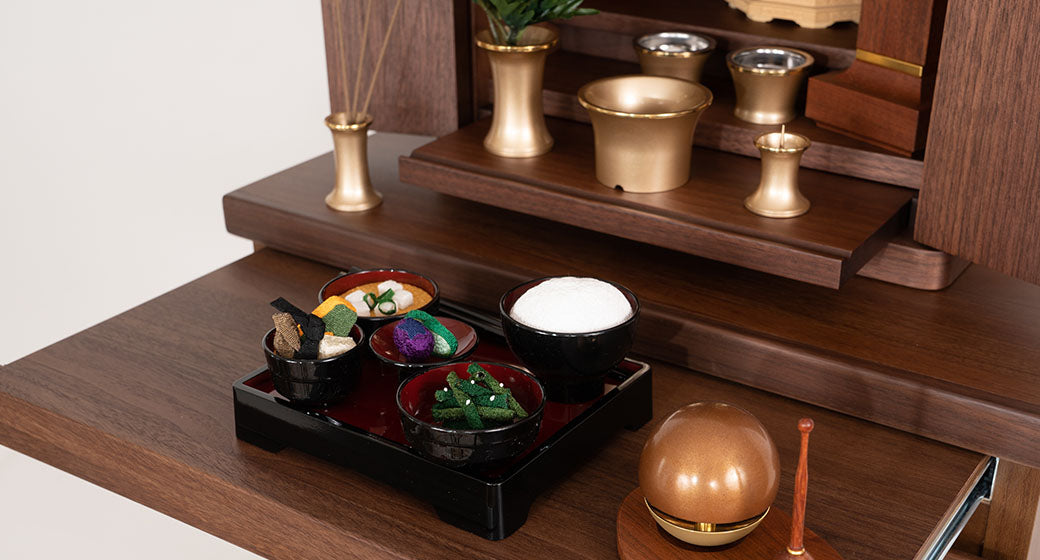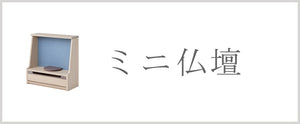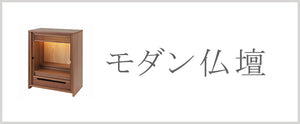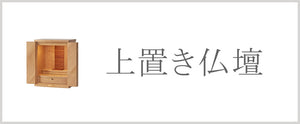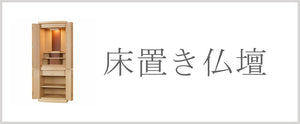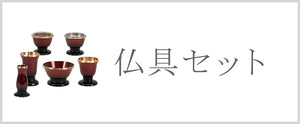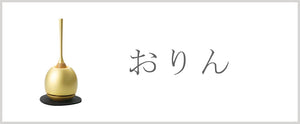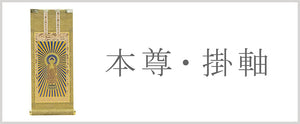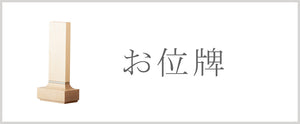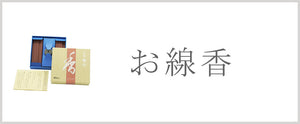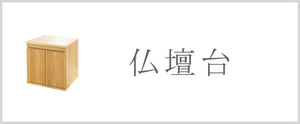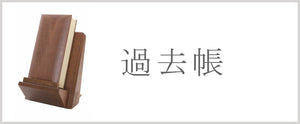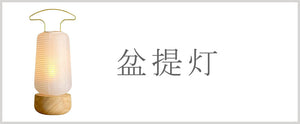Last updated:
Release date:
What do you usually offer at your Buddhist altar?
Offerings to the Buddhist altar are a way of expressing gratitude for being able to live a life without worrying about food and drink.
This time, we will explain the basics and points to note about offerings that you should prepare on a daily basis, as well as the differences between offerings at memorial services.
A standard offering given daily
Offerings are usually made in the morning, with the hope that "my family will be safe and sound throughout the day," and with gratitude.
There are five standard types of offerings at the Buddhist altar: rice, water, incense, candles, and flowers.
Ideally, we would make offerings every day, but in reality, this is quite difficult.
If you like the smell of incense or the sight of smoke rising, you can give incense sticks, and if the deceased loved plants, you can give flowers.It's fine as long as you feel comfortable doing so.
cooked rice
It expresses gratitude for the food available.
It is said that Buddha drinks steaming rice, so freshly cooked rice is best.
If you don't cook rice every morning, you should offer it only when you do. Also, if you eat bread in the morning, you can cut it into small pieces and offer it as an offering.
The offering position is in front of the principal image, as it is believed that offerings are made to the ancestors through the principal image.
If you are receiving hand-me-downs, eat them before the rice gets hard.
Generally, rice is served in a mountain shape in a Buddhist vessel, but in the Otani sect of Shinshu Buddhism (East), it is considered proper to serve rice in a cylindrical shape.
water
The water offered to Buddha is called purified water.
The purpose of making offerings is to have the ancestors quench their thirst.
It is also said that by offering water, the heart of the person offering it will also be cleansed by the pure water.
Considering its intended role, water is the best choice.
However, in recent years, offering the deceased's favorite drink has become a new way of offering memorial services.
Coffee and tea, which are generally considered to be avoided in Buddhism, are fine as everyday offerings.
The position for offering water is in front of the principal image, just like rice. When taking away the water offered, it is a good idea to water a potted plant or other plant with it. In Jodo Shinshu, it is not generally necessary to offer water itself, but a plant called shikimi is offered.
incense
The scent of incense is said to purify the place and the mind and body.
There are various scents available, such as sandalwood and agarwood, so you can choose the one that suits your taste.
If the diameter of the incense burner is small, it is a good idea to break the incense sticks to prevent the ash from falling onto the altar.
When extinguishing the flame, do not blow on it, but rather use your hand to extinguish it. In Jodo Shinshu, incense sticks are placed flat, not standing upright.
Also, if you live alone or live in a nursing home and are concerned about fire or if it is prohibited, but you still want to light incense, we recommend diffuser-type incense that does not require fire, or battery-operated incense with an LED light.
candle
It is said that candlelight is a light that illuminates the darkness that is the source of human suffering and makes things visible clearly.
In the past, most candles had a long burning time so that they would not go out during the chanting, but recently, candles with a shorter burning time of around three minutes have also been made.
Please note that you should always use it outside the Buddhist altar.
Be careful, as fires can rise high into the air, even with small Buddhist altars, and even with altars that appear to be of a size that should not cause any problems at first glance.
Like incense, when you want to extinguish a candle, you should not blow on it, but rather use your hand to extinguish it. Recently, some people have started using battery-operated candles as a precaution against fire.
flower
Since ancient times, flowers have been offered as a way to show respect and gratitude.
It is also said that the ability of the tree to grow and bloom in any environment is what led to it being offered as a symbol of faith.
You can't go wrong by choosing flowers that are durable and don't have a strong scent, such as chrysanthemums, statice, and bellflowers, which are generally sold as Buddhist flowers at supermarkets and florists.
It is also recommended to offer flowers that reflect the season or that the deceased liked, but avoid thorny flowers such as roses or vines such as morning glories.
Return old flowers to the soil in your garden, or express your gratitude by wrapping them in newspaper and disposing of them with general waste. Fresh flowers are preferable, but if you find the maintenance of them too much of a burden, you can also use artificial flowers or preserved flowers.
Other offerings (sweets, fruit)
It has long been a custom to offer round rice cakes as offerings, but it is also a good idea to offer other items at the Buddhist altar, such as the deceased's favorite sweets, seasonal fruits, or souvenirs from trips.
When making an offering, it is polite to place the offering on a sheet of Japanese paper. If there are two offering tables, the one on the right is the seat of honor, so it is thought that the item that has been handled more by humans should be placed on the right side.
The difference between offerings for everyday use and those for memorial services
I explained that in everyday situations, it is important not to think too hard about it and to prioritize the desire to give, but at memorial services, you will want to make a formal offering.
However, if you feel like preparing for the wedding is too much of a burden, it's okay to do as much as you can. Check out the following points and start incorporating them little by little.
Add a Buddhist meal (offering)
A Buddhist altar is a Buddhist implement used on formal occasions such as memorial services.
Buddhist vegetarian food is placed inside the tray and offered to the deity. There can be one or two trays. If there are two trays, they are offered to the principal image of Buddha and ancestors. However, this is not used in the Jodo Shinshu sect.
Give the original offering, not a substitute.
These are substitutes suggested for everyday offerings, but they should not be used at memorial services.
Incense and candles should be lit, and it is advisable to prepare freshly cooked rice, water, and beautiful fresh flowers on the day.
Sweets and fruit also available
For regular offerings, sweets and fruits are sufficient on occasion, but it is ideal to prepare them in advance for memorial services.
Let's start by learning the basics of offerings and choosing what to offer within your means.
The five basic offerings are rice, water, incense, candles, and flowers. However, it is not necessary to prepare all of them every day.
When making your selection, think about things like, "What did the deceased like?" or "What flowers would be good for this season?"
By placing the offerings you have selected in this way on the altar and gently praying, you will naturally feel a sense of gratitude to Buddha and your ancestors, and you may be able to prepare your offerings with a calmer mind than before.
Nagomi Kobo TOP page is here >
